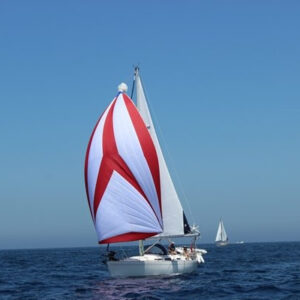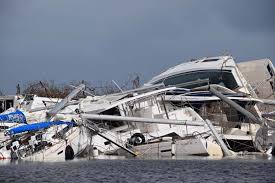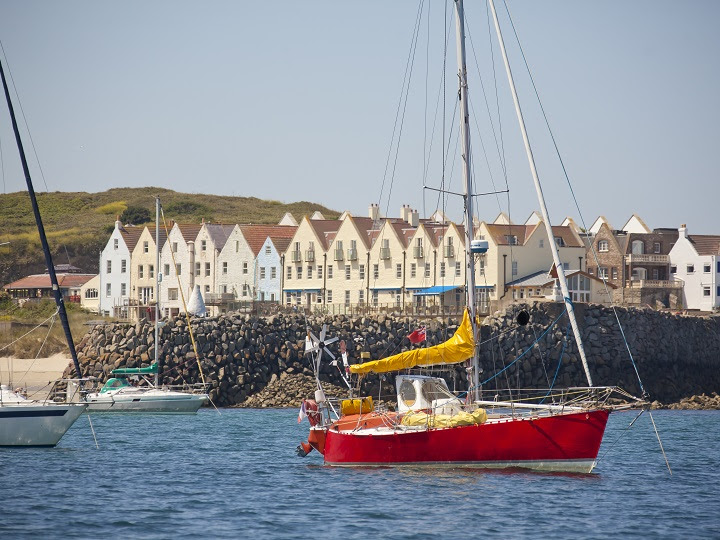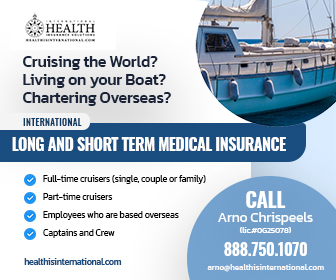Insurance: Yacht Owners Warned Against Under-Insuring
A new and disturbing trend is arising in the boat insurance industry, where owners are significantly under-insuring their boats, a trend which is causing considerable concern among companies within that industry.
Published 2 years ago


It wasn’t many, but enough to make Postle sit up and take notice of the trend, and it’s one that he says is not good for his business, for boat owners or for the environment. Postle’s noticed that some owners were significantly under-insuring their boats, borne out of a combination of wilful naivety, economics and buying insurance online rather than a person to person discussion.
“There are too many instances arising where, for example, someone buys a boat for £2,000 and then insures it, via the net, for what they paid. But if something like the rigging fails, it’s potentially going to cost a lot more than £2,000 to be repaired,” Postle told Maritime News.
“The growing issue of under-insurance is most apparent on boats purchased for under £20,000 which might be worth £10,000- £12,000, or £3,000 to £4,000 for a ‘tatty’ one. Then the owner does lots of work and gets it looking mint. But if the rig falls over to one side, the quote to replace the mast and boom will cost more than the boat is insured for.”
Noonsite spoke with a number of marine insurance firms, all of whom said it’s never just the price of the mast in an insurance claim. Add on the standing rigging, the boom, halyards, electronics and nav lights and then the logistics such as carriage, craning and labour. Before long a mast replacement costing £2,000 becomes £6,000 or more when everything is added in.


“It’s so easy to get it wrong in the little ones, in the sub-£10,000 range,” he says. “Owners possibly choose to be naive and live in ignorant bliss. They think ‘I’ve managed to insure for £100 per year’ rather than insure their boat properly.
“It’s not really a new problem, or new people coming into boating, but it’s growing. It’s possibly the desire to run boats on a budget, thinking insurers will simply pay out, but then owners get caught out. They end up taking the cash value, and then buy a new ‘old boat’, and it continues.”
Postle believes it’s time insurance companies include ‘rig value’ in their enquiry forms as a way of making owners think about what they’re doing. “But some insurance companies choose not to ask,” he says. “It’s possibly indicative of how things get lost in translation with everything trying to happen online.”
Postle believes that the industry is currently in the process of re-balancing itself. The last 10 to 15 years haven’t seen the 30-40 year old sailors coming in at bottom end and working their way up. But he now believes lockdown has inspired younger people to invest. Postle says there’s a lot of choice, with 40-year-old boats, sub 25-foot, which are pretty worthless, a couple of hundred pounds, but that can carry on forever.
Insuring Older Boats
“We’re getting more and more enquiries to insure older boats,” says Mike Wimbridge, managing director of Pantaenius UK Limited. Wimbridge is aware that not all companies will cover them as the “yacht/pleasure boat insurance market took a massive hit in 2017 after three hurricanes in the USA which had a follow-on effect for everyone else,” but says that Pantaenius is focusing on ‘local heroes’ this year and looking after them.


He agrees with Postle that online insurance comparison sites are not the norm for yachting. “If sites output very low prices, clients may accept them irrespective of what those policies cover or, perhaps more importantly, what they don’t cover”,” he says.
“I come from a traditional background where talking to people matters and it is this traditional background which has informed Pantaenius’ model. Owners need to understand what they’re buying and make an informed choice. It’s unfair to make an assumption that people will always want cheap, cheap, cheap.”
The challenge of underestimating costs isn’t, however, restricted to the lower-end of the market. “We cover vessels from the ground upwards, to the biggest in the market,” Wimbridge says.
“Traditionally the rough rule of thumb for the cost of running a boat was 10 per cent of a boat’s cost. Where people are buying 30-40m older superyachts, for as little as £1m, that changes and amounts to a considerably high percentage of the boat’s purchase price. Clients are getting these boats at a good price but it’s definitely worth talking to someone to understand the likely costs of running a boat – whatever the size.”
How to Assess Value
Colin Dawson, Managing Director of The George Group and a Technical Representative on behalf of Howden Insurance Brokers (HK) Limited, says the value that should be put to a yacht is a very difficult thing to assess as, in reality, it is based on what someone would be prepared to pay for the yacht.
“A value may differ from country to country and will depend on many factors,” Dawson says. “If insurers request a valuation they will require a surveyor to assess this, but in reality a yacht broker is best placed to give a valuation as they are dealing with these things on a daily basis and know what’s happening in the market. Usually though, they are reluctant to provide this service!
“Very often we see owners wishing to insure a lower value in order to save on premiums. In the event of a partial loss where insurers are required to replace new for old, the value could be questioned and, again, insurers may be liable only for the relative proportion in settlement.
“In the event of a total loss, insurers will pay the full amount but then, for a very small saving in premium, the owner has lost a significant amount of money. If premium saving is of paramount importance, most insurers will agree to co-insure with the owner, their taking a proportion of cover while the owner retains the rest. When presented to owners and the premium saving is demonstrated, most owners realise the saving is, really, very small and usually will accept the insurers taking the full risk for the premium asked.”
Insurance Value Should Reflect Current Market Value
Stephan Velliades from Velos Insurance Services Ltd in London advises that with an agreed value policy, the boat’s insurance value should be set at a level which reflects the current market value to enable replacement with a boat of similar age , type, condition and specification if the insured boat was declared a total loss.
“The original price paid for the boat is a good start point but any additional equipment added or improvement works carried out post purchase should also be taken into account,” says Velliades.
“Depreciation in value varies with boat type and age, so owners should keep abreast of current sale prices or consider engaging a qualified marine surveyor to value their boat, especially if extensive refit works have been carried out or the boat is not a mass produced model and there are few resale examples.
“Whilst most insurers will be reluctant to insure a boat for more than its purchase price, if a value can be justified with details of post purchase improvement works, sales prices of similar vessels and/or a surveyors valuation they are more likely to approve a higher amount.”
…………………………………………………………………………………………………………………………………………
Related News:
Yacht Owners Warned Against Under-Insuring (Maritime News)
………………………………………………………………………………………………………………………………………….
Related Links:
Howden Insurance Brokers (HK) Ltd
………………………………………………………………………………………………………………………………………….
The opinions expressed in this article are the business owner’s own and do not reflect the view of Noonsite.com or World Cruising Club.
………………………………………………………………………………………………………………………………………….
Noonsite thanks Pantaenius UK Ltd, Howden Insurance Brokers and Velos Insurance Services for providing input into this report.
Related to the following Cruising Resources: Insurance, Yacht Insurance




I agree with the prior comments; the article is not addressing current insurance issues that boat owners have, i.e., obtaining hull insurance for older boats (20+yrs.) and the difficulty of or lack of underwriters willing
to insure boats out of their home country.
I received a notice of non-renewal from GEICO last March saying that they are no longer insuring USA documented pleasure craft boats outside of the country (my boat is currently in Mexico).
I have an older multi hull. Insurers will only offer 3rd party. I dont expect much Pantaenius could only offer me 3rd party international cover while my boat that was on the hard in the Atlantic for €550 I bought a 3rd party policy locally (face to face if you like) for €40. This story leaves me a bit nonplussed.
this article is ridiculous. are they actually surprised that someone who buys a $3000 boat isn’t worried about insuring it for the full price of replacement??